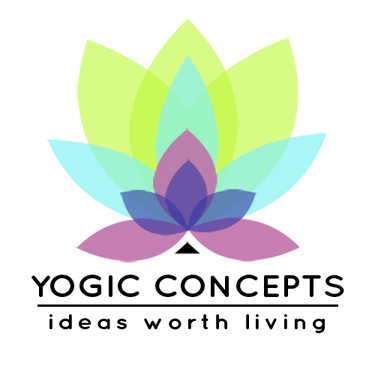History of Pranayama
History of Pranayama
Dr. Anil Singh
2/16/20217 min read


Nowadays Pranayam is second most popular practice of yoga. During this pandemic it became more popular as it has great role to play in preventive measures. People found that who started practicing Pranayama has better Oxygen saturation in their blood and developed better immunity. Pranayama helped numerous Covid-19 infected people to recover faster than others.
We can say that the history of pranayama will go back as long as human existence on this planet. All Pranayama practices are related to breathing and breathing is essential part of our being. Life starts with breathing and ends with it, so we can surely say that the practice has been with humankind from ages even before it is named as Pranayama. Many terms have been found and used for practice in different time like – Pranasamyama, Pranasangrahana, Prananigraha, Prananirodha, Pavanabhyasa, Vayunirodha etc. and of course Pranayama.
Pranayama practice has gone through deferent stages of time before Patanjali and Hathayoga or the way we do nowadays. It is well documented in different scriptures and text in different term and purpose of doing it. We can divide the time in different period or stages. Sequence given here does not mean one comes after another.
Vedic Period or Stage:
During Vedic period Pranayama was related with daily rituals, chantings, and religious practices. The students in Gurukuls were chanting long mantras as per the rules of chanting. Many long Mantras need to be chanted in one breath. Without sufficient lungs capacity and control on the breath it was not going to be possible. Either we can say – Pranayama was automatically happening while chanting long mantras, or they might be performing Pranayama practices to be able to control breath to improve the long mantra chanting.
Another way, Pranayama used to be part of oblation “Aahuti” while performing Yajna (sacred fire ritual). Before offering oblation in sacred fire, people will hold the breath for some time. Shatpath Brahman a Vedic literature says “Shwasam Niruddha Juhyaaditi” means “offer the oblation by holding the breath”. It does not give specific technique of Pranayama or how to hold the breath, but it indicates that they were fully aware of the purpose of holding breath. When they held the breath, it made them able to control the mind or contemplate on certain purpose or deity to who they were offering the oblation. We are well aware to the fact that prime purpose of Pranayama practice is to find control over the mind. At that time, the relation between breath-mind and body activities were in consideration.
Other Reference in Vedas:
Rigveda refers it as “Asu Niti”. ‘Asu’ means Prana or breath and ‘Niti’ means the way to control it. So we can say it was practiced to control the Prana. There are several ways to control Prana like Myntra Chanting, Upasana, Om Recitation etc.
Yajurveda refers it as “Angira Sahitya” which means a way to utilised the practice to improve physical and mental strength and increase the lifespan.
Atharva Veda refers it and gives importance of practice as “If you can control the Prana-Apana skilfully, then you can have healthy life for more than 100 years.”
“San kramatam ma jahitam shariram pranapanau te sayujavih stam
Shatam jive Sharado vardhamanoagniste gopa aadhipa vasistah” Atharva Veda 7/53
Thus the tool to control Prana and Apana was in practice for health and longevity.
In Aapstambhadharmasutra, another Vedic Text, the breath control activity was described as: “Aa tamitoho pranayamacchedityeke”. This was explained by commentator Haradutta as: “Yavad anganam glanirbhavati tavadprananayacchadeta” it means – One should hold the breath as long as possible till giddiness appears.
Gayatri Mantra Chanting become the main part of ritual which were considered as pranayama. There is special version of Gayatri Mantra which is suppose to be chanted during exhilaration. It takes nearly 24 seconds to complete. That means one rechaka or exhalation 24 seconds to be performed. If we consider the length of a Purak or inhalation up to half 12 seconds of exhalation, this prolonged breath of Gayatri Mantra Chanting was considered as pranayama practice.
Smriti Literature Period or Stage:
In Smriti literatures name of the phases of Pranayama Puraka, Kumbhaka, and Rechaka are found but still no specific instructions of ratio mentioned. During Smriti time still Pranayama practice found to be the part of religious rituals. The reference from well known Manu Smriti tell us about how it was one of the important activities and also how it worked on the body.
“Pranayamam Param Tapah” 2/83
means “Pranayama is the greatest austerity.” And the purpose of doing it could be related to clean the impurities at the spiritual, physical and mental levels.
“Dahyante dhmayamananam dhatunam hi yathamalam.
Tathendriyanam dhyayante doshnam pranasya nigrahat”
“Just as dross from an ore can be separated by burning it in fire, similarly, by practicing Pranayama impurities from the organs also be cleaned.”
Purana Litrature Period or Stage:
In Puranas time practice again mostly related to OM Chantings. It is done during Om recitation or Pranava Japa. Many author name the Pranayama in Puranas time as ‘Pranavatmak Pranayama” as it was done with Pranava or OM recitation. In the time of Purana, the content of pranayama were described as Purak, Kumbhak and Rechaka which should be performed with particular ratio like 1:1:2 or 1:2:2. However the art of holding breathing was most important part of Pranayama.
Bhagvad Gita Period or Stage:
Bhagwat Gita describes practice in form of offering Aahuti or oblation as well. The expert of practice of Pranayama in this form known as a “Pranayama Parayana’.
“Apane juhyati Pranam pranenapanam tathapare.
Pranapangati rudhwa pranayamaparayana.” 4/29
Apare niyataharah parananpraneshu juhvati
Sarvepyete yajnavido yajnakshapitkalmashah. 4/30
“Still others offer as sacrifice the outgoing breath in the incoming breath, while some offer the incoming breath into the outgoing breath. Some arduously practice Pranayama and restrain the incoming and outgoing breaths, purely absorbed in the regulation of the life-energy. Yet others curtail their food intake and offer the breath into the life-energy as sacrifice. All these knowers of sacrifice are cleansed of their impurities as a result of such performances.”
In 8th chapter Bhagvad Gita describes the ‘Prana’ the vital energy of the body and practice with it called as Yoga Dharana or Yogic Concentration. It describes restraining or closing of the gates which can be taken as the practice of Bandhas in Hathayoga or similar to Pratyahara.
“Sarvadwarani sanyamya mano hrudhi nirudhya cha.
Murdhanyadhayaatmanah pranamasthito yogadharanam. 8/12
“Restraining all the gates of the body and fixing the mind in the heart region, and then drawing the life-breath to the head, one should get established in steadfast yogic concentration.”
For better understanding in Hatha Yogic term two Pranas are divided as Prana and Apana. Prana working above umbilicus and Apanna working below umbilicus. Through Pranayama practice with Bandhas or closing the gates, both enter in the others working field and create opposite force to each-other. Through this force energy gets the opportunity to enter in moon situated in head through Susumna or the middle path. The approach is to bring and stabilise this energy in the head.
Yoga Sutra or Patanjali Period or stage:
This was the time when religious aspect from the practice was taken away by Patanjali. In the time of Patanjali 400 BCE Pranayama was described as Gati Viccheda (retention, pause, or stop) in Shwas (Inhalation) and Prashwas. Here the retention or holding of breath was described in 3 Vrittis or type or phases.
Bahya Vritti – retention or pause/stop after exhalation
Abhyantar Vritti – retention or pause/stop after inhalation
Stambha Vritti – Spontaneous retention or pause/stop.
Patanjali mentioned these 3 Vrittis happen or seen in view of Desha – signs or region of the body where it is felt, Kala – time, Sankhya – numbers used to count in one breath and the ratio of inhalation holding exhalation. These 3 Vrittis or criteria can be used to see the progress or development of Pranayama. The benefit of Pranayama Patanjali describes as psychological and spiritual significance as removal of covering or dark layer around light and ability to practice contemplation for higher progress in Yoga.
Tantra Period or Stage:
In Tantra, Pranayama like practice is described along with 112 techniques of Contemplations or meditation. In Vijnan Bhairav Tantra 5th Century text, the techniques of meditation described which are based on breathing modifications with inner awareness:
“Kumbhita rechita vaapi purita va yada bhavet
Tadante shantanamasau shktya shantah prakashate.” Vijnan Bahirava – 27
‘When the breath or energy is retained either outside the practice of Rechaka or inside the Puraka and or retaining or Kumbhak, it leads to the deep calm state in which the kundalini rises and the Saadhaka gets enlightenment.
Shankaracharya Period or Stage:
Shankaracharya in “Yoga Taravali” 8th century’s text described the importance of Pranayama. He describes importance of Nadi Shuddhi in order have the proper flow of Prana to listen Nada or inner sound. He describes Pranayama to be done with application of all Bandhas. Purpose of Pranayama with all Bandhas to prepare the practitioner for Kundalini arousal or to achieve higher states of Yoga. This is called Keval Kumbha Vidya.
“Bandhatrayabhyasavipakjatam viverjitam rechapurakbhyam vishosayanti visayapravaham vidyam bhajate kevalkumbharupam.” Yoga Taravali-8
“I adore the lore of the form of Keval Kumbhaka which is born of the result of the practice of three Bandhas, which is bereft of exhalation and inhalation and which dried up torrent of sense objects.”
Hatha Yogic or Modern Period or Stage:
Nowadays whatever Pranayama practices we do, all credit goes to Hatha Yoga, 10th to 18th century. Extensive work on Pranayama by Hatha Yogis gave us different types of Pranayama, proper techniques and other supportive practices to make Pranayama effective to achieve goal of Pranayama practice. Pranayama become the most popular and effective practice Yoga practice, the practical skills of Puraka, Kumbhaka and Rechaka were described on more details from the time of Hatha Yoga.
Three men Scriptures are notable Gorakshsatakam, 10th century, Hathayoga Pradipika 14th century, and Gheranda Samhita 18th century.
In Gorakshashatakam, instead of prolonged kumbhak, the skilfully slowing in the inhalation-exhalation and limited Kumbhak were given more importance.
“Mandam mandam pibetvayum mandam mandam viyojayeta
Nadhikam stambhayetdvayum na cha shighram vimochaeta.”
“One should inhale slowly and exhale slowly one should neither retain breath for too long or beyond capacity, nor should one excel too rapidly. For breathing he selected the alternate nostril breathing technique.”
Gorakshashatakam says “Pranayamen Patakam” means “Pranayama practice can get rid all the sins”
In the time of Hathayoga Pradipika the word “Kumbhaka” become synonym of Pranayama. It indicates the importance of Kumbhaka in Pranayama practices. Hathayoga Pradipika also gave breathing varieties which become popular along with Kumbhaka.
Hathayoga Pradipika explained to two type of Kumbhaka – Sahita and Kevala. Sahita is the voluntary practice of Kumbhaka or Pranayama. Kevala is involuntary or automatic stage of Kumbhaka or Pranayama.
In Gheranda Samhita the voluntary practice of Pranayama is described as Sagarbha (with Mantra) and Nigarbha (without Mantra).
About Author:
Anil Singh is the founder of Yogic Concepts who has more than 20 years of Teaching experience with educational institutes, yoga teacher trainings, and workshops to high profile clients. He also has ample of experience in wellness field, working with world famous wellness resorts and has delivered Yoga based wellness programs successfully. Currently he does Yoga and Pranayama Teacher Trainings in Thailand, India and Online.
In next blog we will discuss importance and purpose of Pranayama as per Hatha Yoga Tradition and different types of Pranayama.





